I haven’t been stress-printing before the election, YOU have. Well, maybe you will after this post, at least. Fire up your 3D printer(s) because there are dozens of things you need to print before Tuesday :)
In the photo below there are 3D prints of each of the 50 states (and DC, which has 3 electoral votes), sized to each have approximately the same area, with heights determined by number of electoral votes. The blue states lean strongly Biden, and the silver pole measures out the target 270 electoral votes. It’s a tall stack, I’m just saying. A tall stack is nice. Focus on that. Try to breathe.
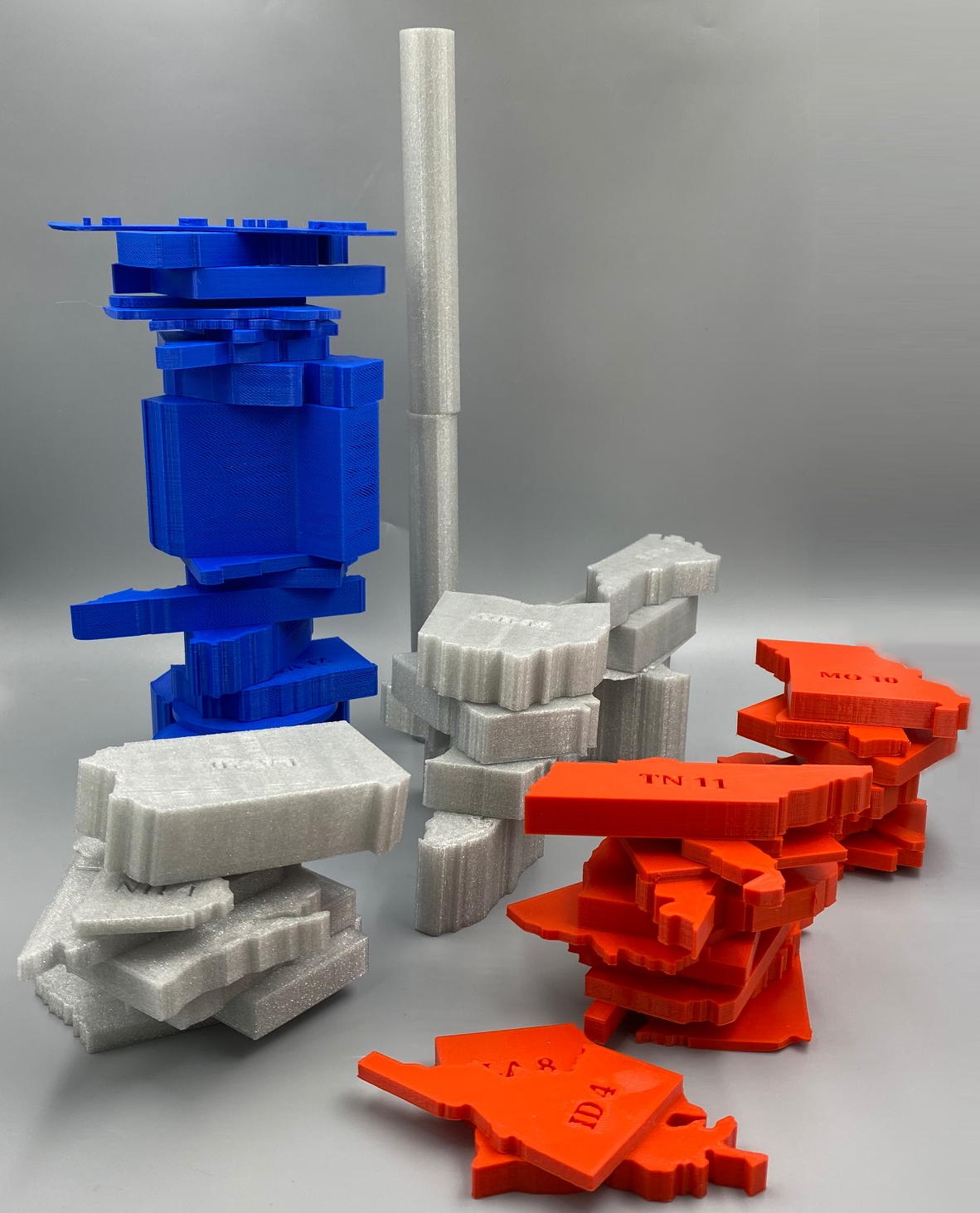
After I printed all that, my son suggested that he would like the states better if they had holes in the middle so they could be stacked on posts, and he was completely right — that would be much better. Dammit!
We decided to use pencils for the posts because 3D printed long, thin rods can break very easily. Plus, the pencils look cool. These models are half the height of the ones above, so that they can fit on the pencils. We also printed some donkey and elephant bases, and a little measuring stick that corresponds to the desired 270 electoral votes (you can see it in the back behind the blue states).
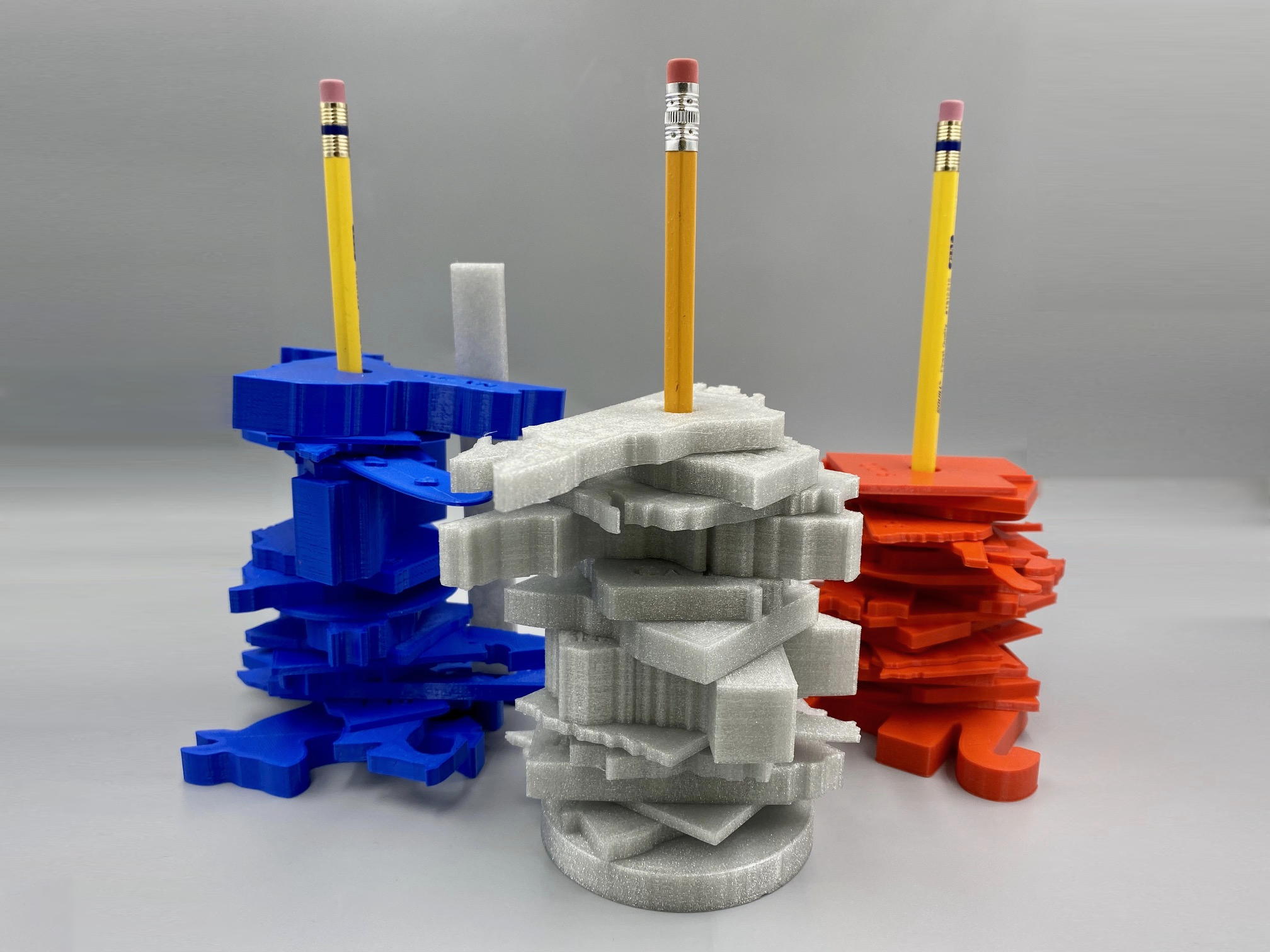
Electoral votes by *volume*
These models give the first volumetrically accurate representation of each state’s electoral votes that I am aware of. We’ve all seen that 3D map of the U.S. where each state is given the height of its electoral votes, but that still doesn’t take into account the fact that different states with the same number of electoral votes could differ in land area, and thus still appear at different relative sizes.
Consider the excellent 3D-printable Electoral Vote Map from TheNewHobbyist on Thingiverse. Look at Massachusetts and Alabama, for example; each has 11 electoral votes, and thus the same heights — but they have very different land areas (you can barely see Massachusetts!), and thus very different volumes, so they don’t feel like they contribute the same amount:

That problem is fixed in my new 3D-printable models; in these models Massachusetts and Arizona have been resized to have the approximately the same land area, so that they look and feel the same size when printed:

Which colors?
I’ve printed the states in blue and red for solid Democratic/Republican states, with toss-up and leaning states printed with silver glitter filament for “sparkle states” — who knows what will happen? To choose the appropriate color for each state, I used the data at fivethirtyeight.com and 270towin.com; see the map below. You can print your states in any colors you like. :)
Quick side note on some weirdness in NE and ME: If I’ve interpreted things correctly then there are three districts in Nebraska each worth 1 electoral vote, two of which are likely red, and 2 additional electoral votes that go to the state popular vote winner. So, in the full-size models I printed a height-4 Nebraska in red and a very thin height-1 Nebraska in sparkles. The situation in Maine is similar with two districts, but leaning the other way. For the thinner half-height models things got too thin, so I made just one model for each of those two states.
Model design for the state shapes and sizes
It is surprisingly difficult to find good SVG files of the states that import well into Tinkercad for extruding and adding labels. With so many states in the union (and two versions of each of them, why do I do these things to myself?), I had to have a fast process for creating each state model, and none of the existing SVG images that I could find online would work for me.
So, I went with a remix of some existing 3D state models instead. The state shapes I ended up using are remixed from remyspencer’s very nice Map of USA States Puzzle on Thingiverse:
The desgn process for my remix was very simple: In Tinkercad, I scaled each state to about the same area (just by eyballing it and seeing what looked nice compared to a reference circle of a certain size), then sized the heights to the appropriate electoral vote counts and added labels.
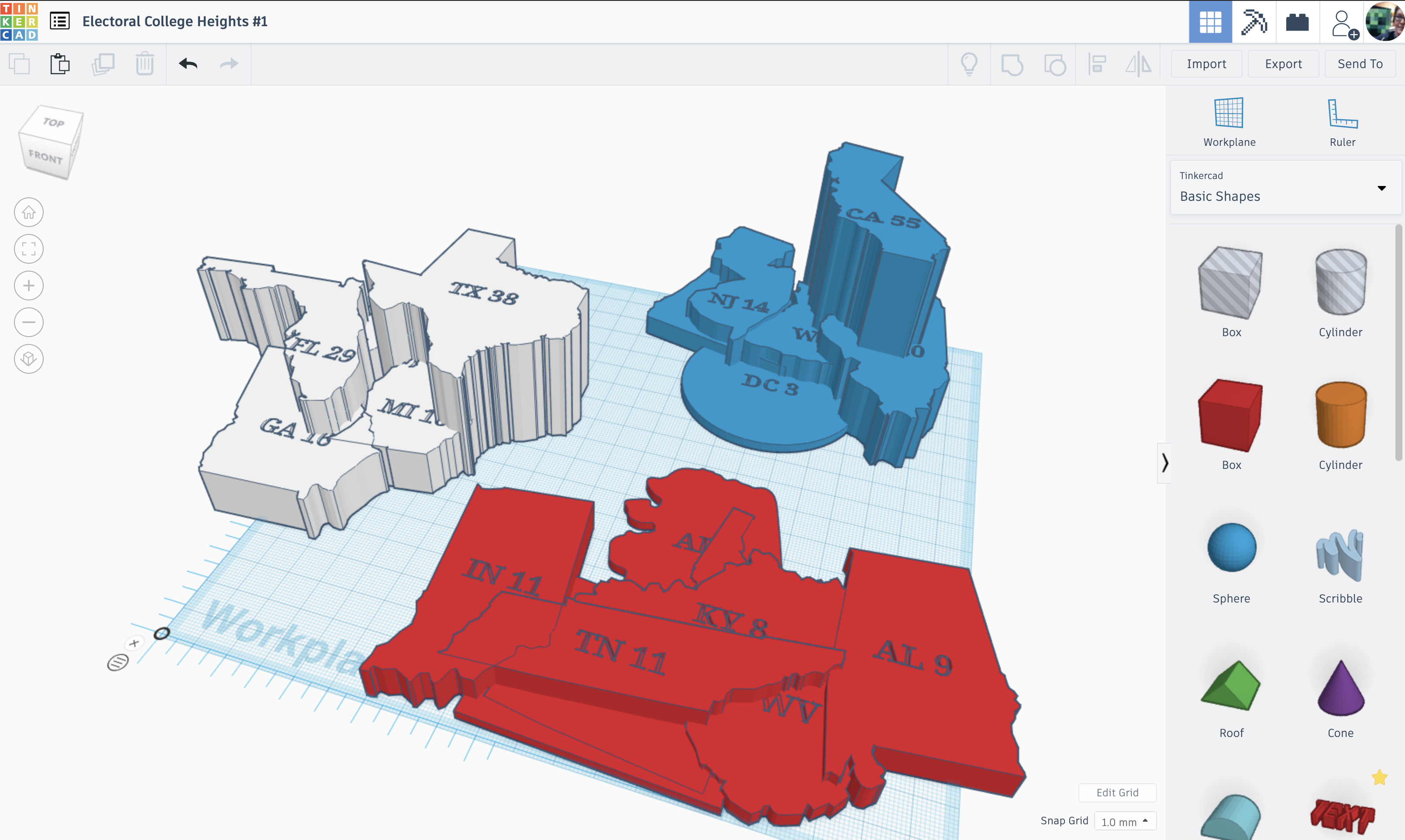
(Are those Georgia and Texas that I see over in the “sparkle states” pile? Why YES, thank you for asking. Fingers crossed!)
The Tinkercad files are split in three, so that no one workspace has too much stuff in it to slow it down; here are the links so you can remix these models yourself if you like:
Once more with feeling holes
The versions with holes are half as tall but with the same areas, so they are (only slightly) faster to print, and 270 electoral votes fit within the length of a standard pencil. A few of them have been re-eyeballed to get a consistent land area across states, I think for the better. You can also play with these models yourself on Tinkercad, if you like:
The Tinkercad files for the half-height “hole” versions are again split in three so that things don’t unexpectedly crash:
The donkey, elephant, and circle bases have holes to fit a standard unsharpened pencil. SVG images for the party logos were taken from Wikipedida OpenCommons; see the first link in the list above. A handy measuring stick model is included in the second link, so you can mark your pencils at the 270 vote target (be sure to measure starting at the top of the base, not at the bottom of your unsharpened pencil).
3D printing marathon/sprint
The Democratic-leaning and Republican-leaning states were printed on a couple of very nice Ultimakers in MatterHackers Red PRO Series PLA and MatterHackers Blue PRO Series PLA . The Ultimakers are very good at printing flat things that adhere faithfully all the way to the edges of the build plate, especially if you have a little bit of MagicGoo.
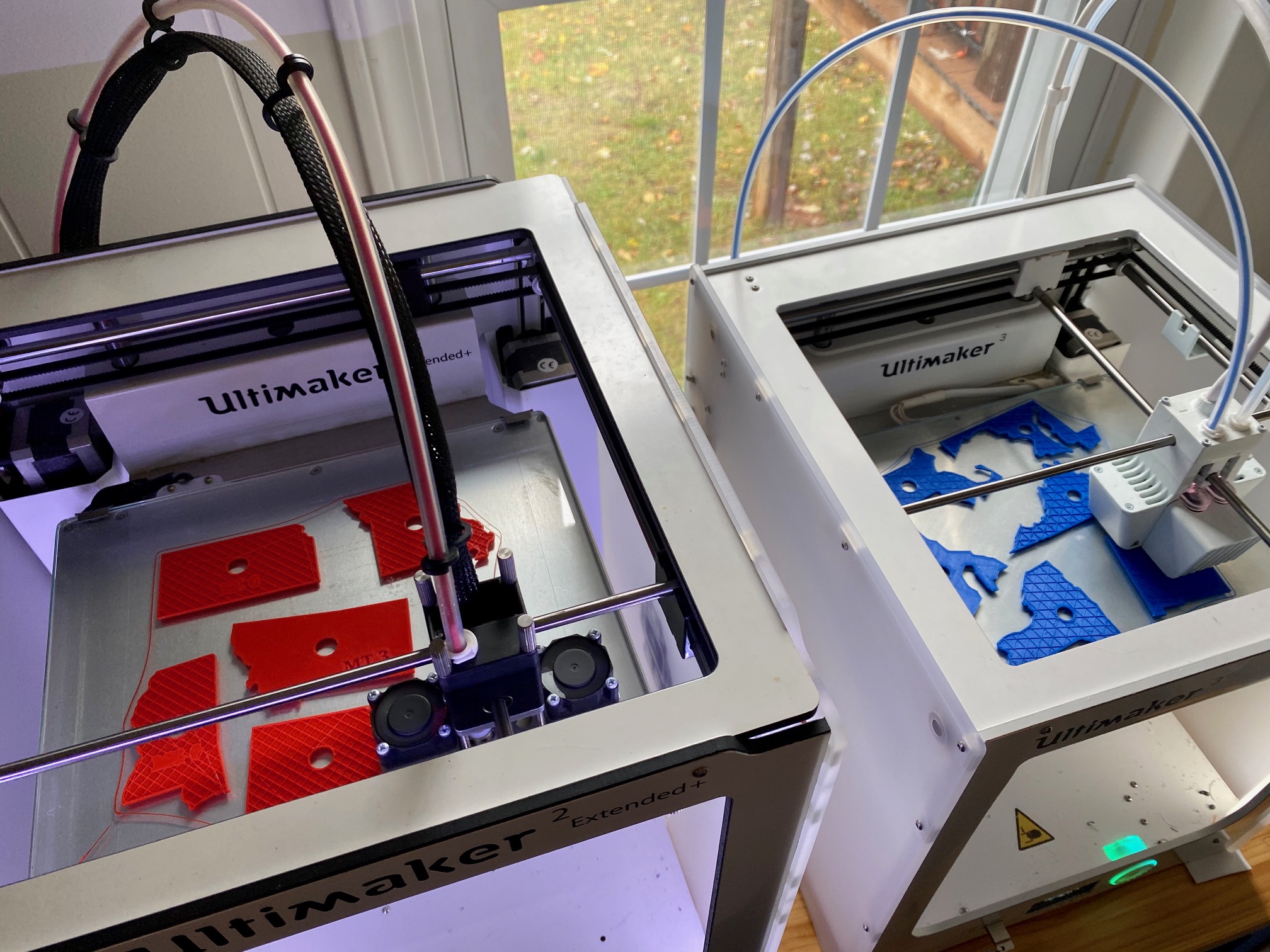
The “sparkle states” — on which all hope rests — were 3D printed in one of my favorite filaments, Protopasta Stardust with Silver Glitter HTPLA, on my trusty old MakerBot Replicator 2’s, for good luck. Those old workhorse printers are *really* fast, but they don’t have good build platform adherence anywhere except the very center, so I had to print the sparkle states one at a time.

If you want to print your own, you can download STL files from the Tinkercad links above, or just get the files directly from PrusaPrinters or Thingiverse at these links:
tl;dnr
Print some states with heights according to electoral votes. Do it fast before the election so you can play! Links to printable and remixable files above :)

——————
As an Amazon Associate we earn from qualifying purchases, so if you’ve got something you need to pick up anyway, going to Amazon through this link will help us keep Hacktastic running. Thanks! :)

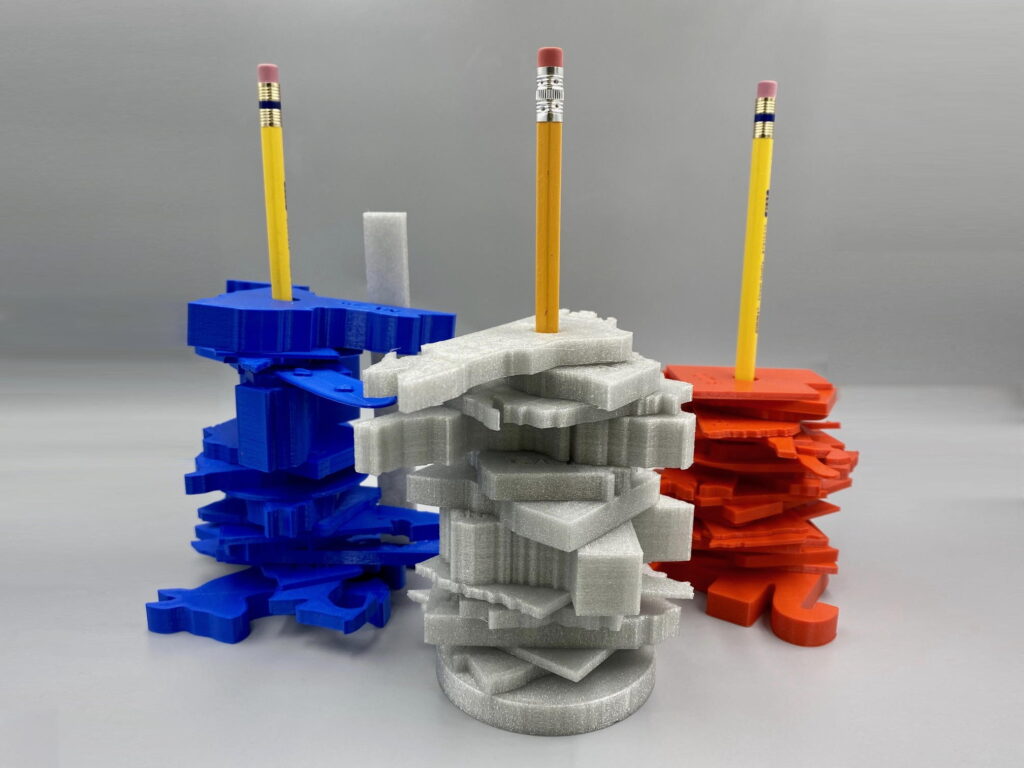
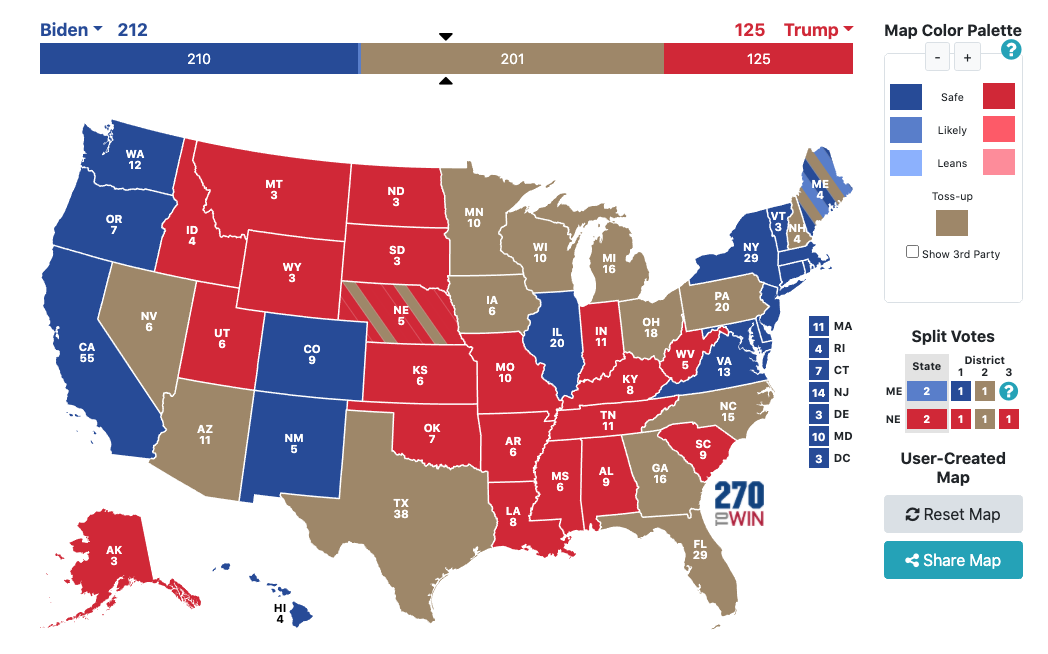
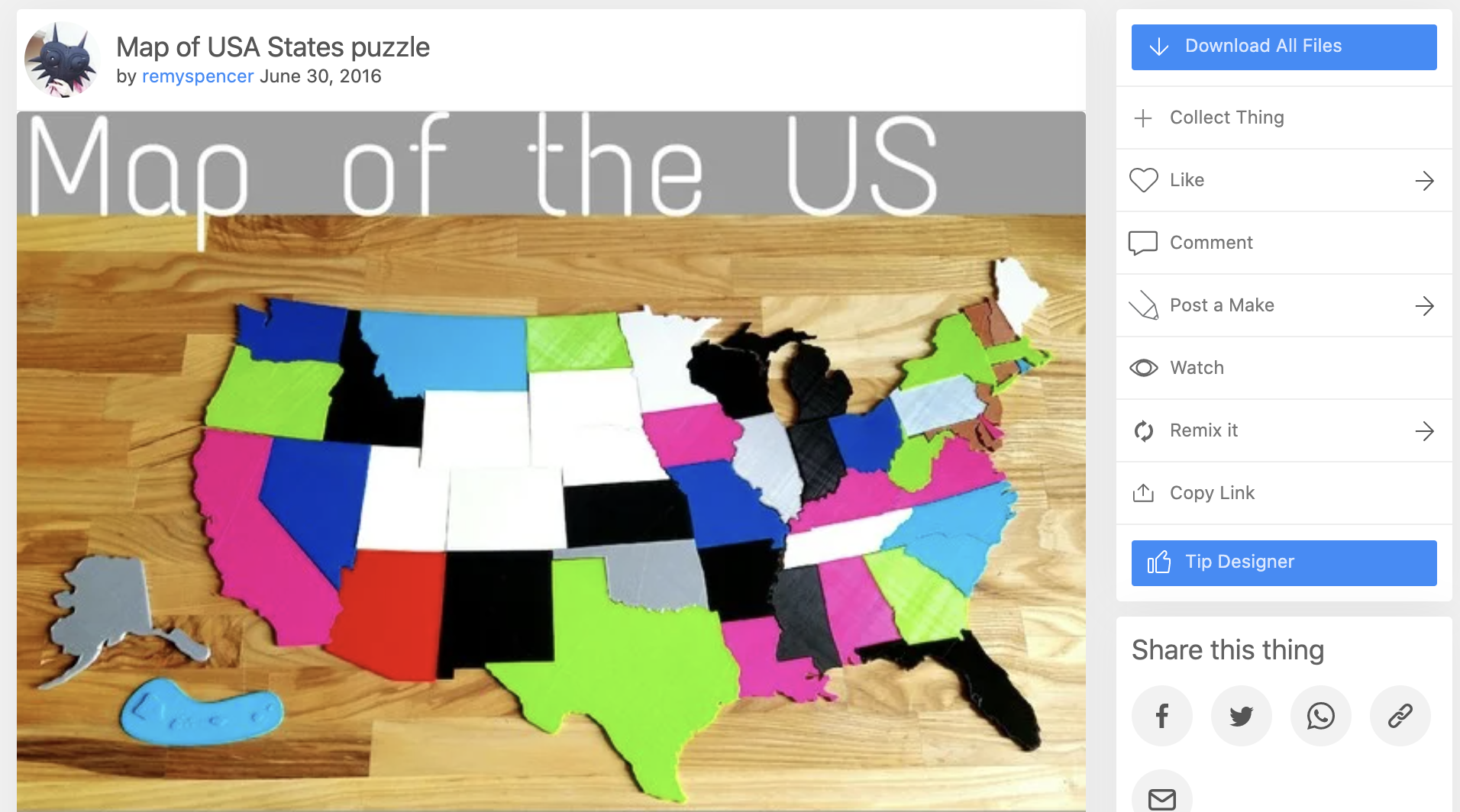
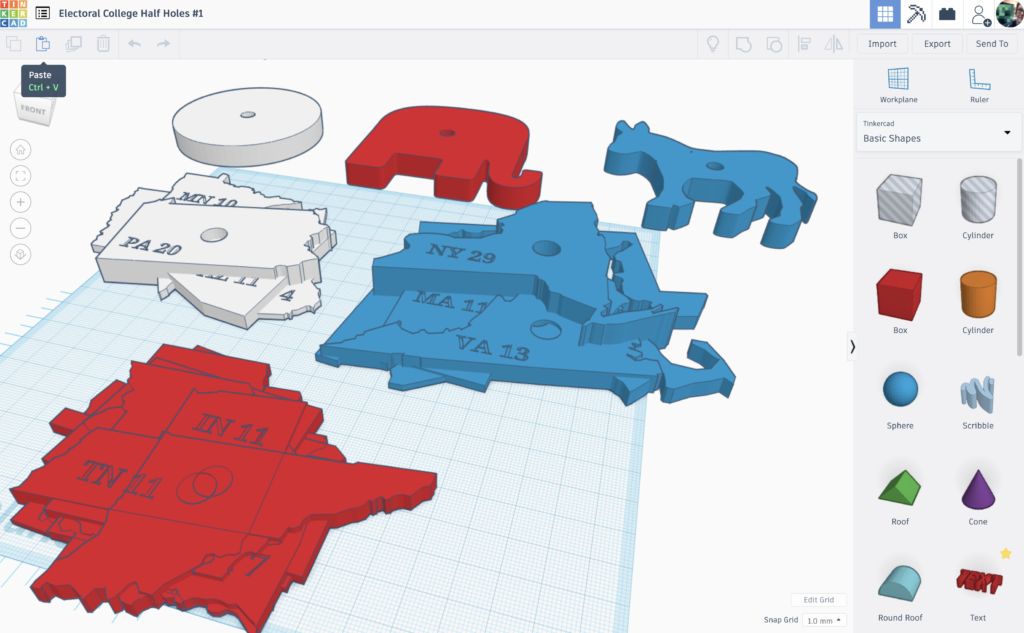
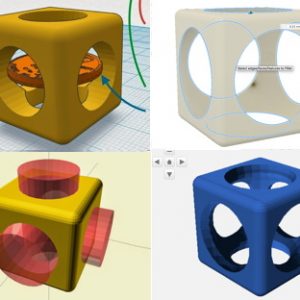
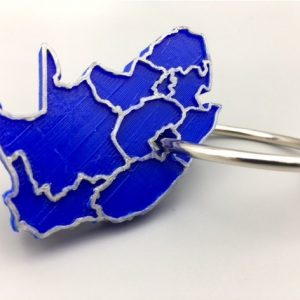
I came to your site from the amazing triple check stitch knitting pattern (hats off to you!) Being a Brit – living and working in Europe I was totally horrified at the results of the last elections both in the UK and the USA. I don’t have access to a 3D printer – but it would be a great tool for us (we who do not understand the counting of the USA election ) to watch the results if someone uses this online. Any idea where it may be used please? As they say in France – ALLEZ LES BLEUS